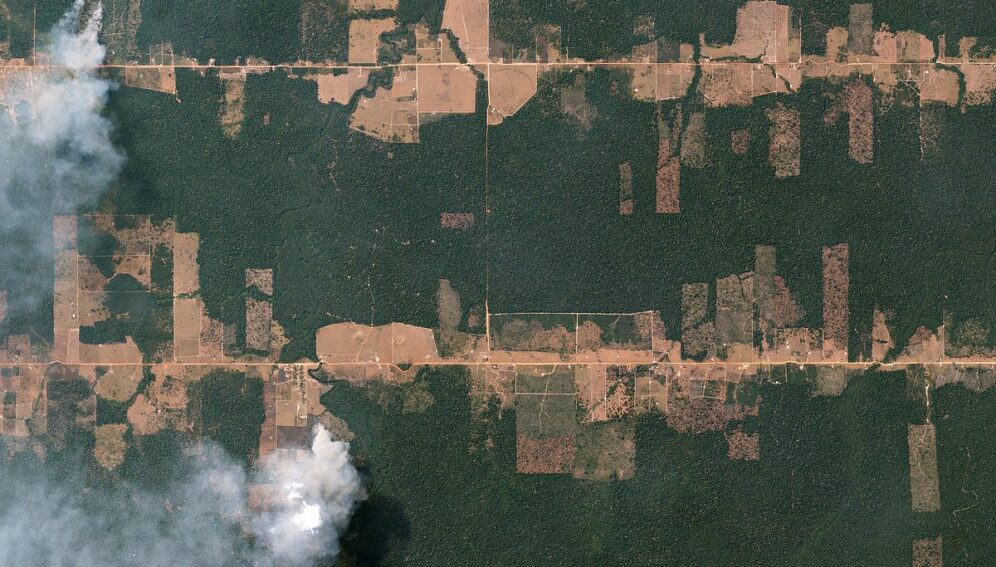02/05/22
Tree loss in tropics casts doubt over climate goals

By: Dann Okoth
Send to a friend
The details you provide on this page will not be used to send unsolicited email, and will not be sold to a 3rd party. See privacy policy.
Tropical regions of the world lost 11.1 million hectares of forest cover in 2021, new data shows, calling into question global pledges to end deforestation by 2030.
Taking in the Amazon and the Congo Basin, the tree loss included 3.75 million hectares of “critically important” primary rainforests, according to the World Resource’s Institute’s Global Forest Watch.
This resulted in 2.5 gigatonnes of carbon dioxide released into the atmosphere, equivalent to the annual fossil fuel emissions of India, the forests monitor said.
“New research shows that the Amazon is losing resilience much faster than we thought, even reaching a tipping point where vast areas transform from rainforest to Savannah, resulting in massive emissions.”
Mikaela Weisse, deputy director, Global Forest Watch
Global Forest Watch deputy director Mikaela Weisse told a virtual press conference: “The team specifically focused on the loss in humid tropical primary forests, which are areas of pristine rainforest that are important for carbon storage and biodiversity.
“We also focused on tropical forests because that is where modern-day deforestation — more than 96 per cent — takes place.”
The report described the rate of primary forest loss in the tropics in recent years as “stubbornly consistent”. The loss in 2021 was 11 per cent less than in 2020 but followed a 12 per cent increase in 2019, mostly attributed to fires, it said.
At the UN climate summit, COP26 in Glasgow last November, leaders from 141 countries signed a declaration on forests and land use, pledging to “halt and reverse forest loss by 2030”.
Realising these goals requires “a consistent decline in forest loss every year for the rest of the decade”, according to the report based on data from the University of Maryland in the US. So far this is only happening in a few countries in the tropics, such as Indonesia and Malaysia, where primary forest cover loss has declined in recent years.
“This new data underscore just how much effort is needed to achieve the deforestation goals,” said Weisse.
Brazil accounted for more than 40 per cent of the world’s tropical primary forest loss in 2021, amounting to 1.5 million hectares. The vast majority of this occurred in the Amazon, said Rod Taylor, global director of the forests programme at the World Resource Institute.
“Forest cover loss in Brazil, especially in the Amazon has been persistent over the years,” said Taylor, adding that loss due to fire fluctuated depending on the conditions. The analysis, for the first time, took into account tree cover loss due to wildfires, intentionally set fires and fires from agricultural activities.
Between 2020 and 2021, non-fire losses in Brazil — usually linked to agricultural expansion —- increased nine per cent, according to the report. It said clear-cut deforestation was the highest it had been since 2006, when a number of measures were introduced to reduce deforestation.
Key states in the western Brazilian Amazon saw a 25 per cent increase in non-fire loss of primary forest loss, with new “hot spots” springing up where large-scale clearings had been made alongside existing roads, probably for cattle grazing, the report suggests.
“New research shows that the Amazon is losing resilience much faster than we thought, even reaching a tipping point where vast areas transform from rainforest to Savannah, resulting in massive emissions,” said Weisse.
The Democratic Republic of Congo (DRC) had the second largest forest loss in 2021, losing nearly half a million hectares of forest cover. This was driven by small-scale agriculture and harvesting of trees for charcoal production, according to the analysis.
“DRC’s vast forest is a big global carbon sink and big changes are needed to curb this forest loss,” warned Elizabeth Goldman, senior geographic information system research manager at Global Forest Watch.
“These should include pursuing of new development pathways and improving agricultural yields so that expansion of agriculture does not continue unchecked into primary forests, and access to clean energy,” she suggested.
On the positive side, Indonesia saw a 25 per cent reduction in primary forest loss compared to 2020, the country’s fifth year in a row in decline. Malaysia also experienced a fifth year in decline.
Hidayah Hamzah, forest and peat monitoring senior manager at World Resources Institute, Indonesia attributes Indonesia’s progress to corporate and government actions that “are clearly working” as the country “heads in the right direction to meeting its climate commitments”.
She said the Indonesian government had increased fire monitoring, expanded forest restoration, and revoked licenses for logging, palm oil plantations and mining in forests.
But Hamza is worried that palm oil prices in the country are at a 40-year high. “This might increase the appetite to expand palm oil plantation in forest areas,” she warned.
These exceptions aside, Benson Ochieng’, executive director at the Institute for Law and Environmental Governance in Nairobi, says the global forest loss trends are indicative of unwillingness to follow through on climate commitments.
“Commitments such as zero-deforestation are beautiful. But they are as good as the people who implement them. Otherwise they would not be worth the paper they are written on,” Ochieng’ told SciDev.Net.
He challenged leaders and corporations to put pledges into action, citing the example of the AFR100 initiative where African countries will begin restoring 100 million hectares of degraded land by 2030.
“Unlike other pledges and commitments, the AFR100 initiative has a budget, funders and timelines,” he said.
This piece was produced by SciDev.Net’s Global desk.















